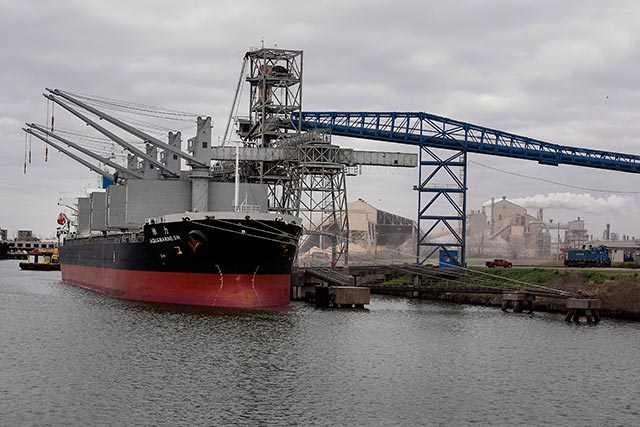Houston Port Prepares for Deeper Ship Channel

The U.S. Army Corps of Engineers said it will begin surveying the Houston Ship Channel for the next round of dredging.
The channel, which was dug out of a bayou in the early 1900s, requires regular dredging, and its depth is critical for moving goods cost-effectively in and out of Houston. The Ship Channel falls under federal management and is authorized for dredging to 45 feet, but securing funding to maintain that depth is a constant battle for Houston port representatives.
Along the 52-mile-long Ship Channel that stretches from the Turning Basin just inside Loop 610 East to Galveston, the channel gets as shallow as 36 feet, said the Army Corps' Galveston District, the branch responsible for maintaining it.
The announcement will kick off a study to dredge to at least 45 feet that the Army Corps expected to take four years and cost $10 million before dredging begins.
To keep dredging on track, the Port of Houston Authority is stepping in to split the funding with the federal government, the Army Corps said. It's also funding an $80 million dredging project at its container terminals. The project qualifies for federal funding but the Port Authority felt it could not wait to go through the process, which can take years, especially with the Panama Canal expansion slated to open this summer.
That opening will allow the Port Authority to recruit new business to its container terminals, and a deep channel, which allows for bigger and more fully loaded ships, is an important selling point.
The Port Authority found in a 2008-2009 study that it and its customers lost $52.7 million over those two years in potential trade because the channel was behind on dredging. It estimated that one foot of additional mud filling the bottom of the channel would expand the loss to $372.8 million.
With the increase in trade through Houston since then the costs would likely be greater now. The added costs come from ships carrying less cargo and safety restrictions on deeper-draft ships to maneuver through the channel during daylight or requiring two pilots in some situations.

